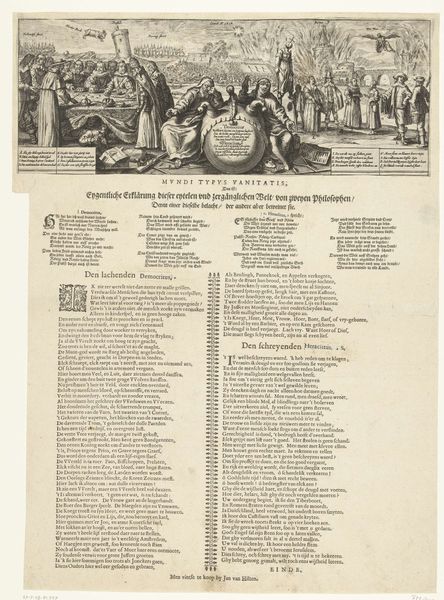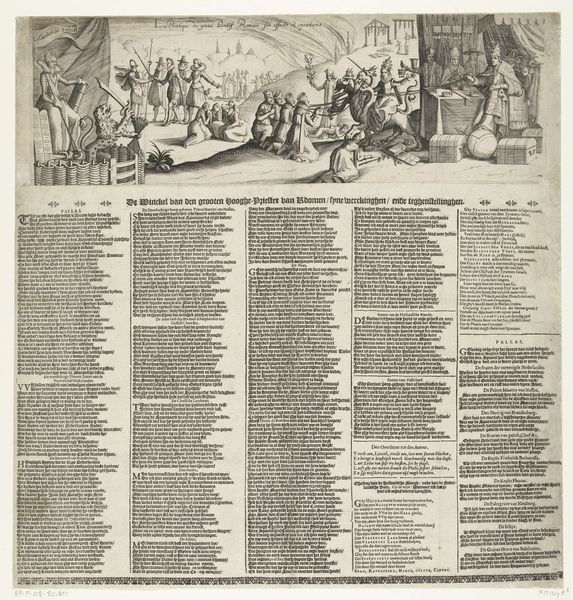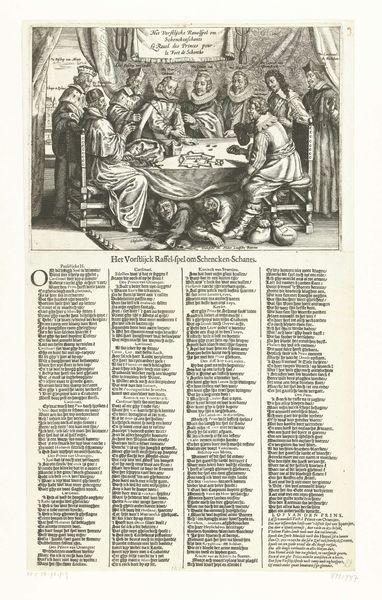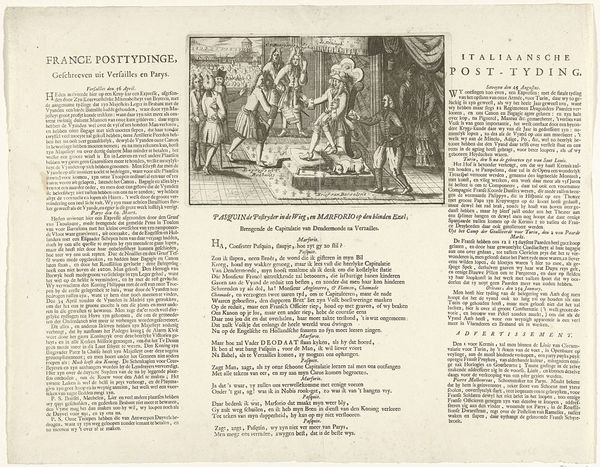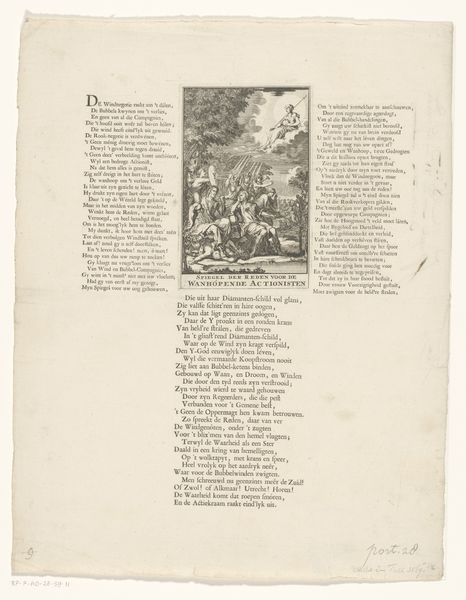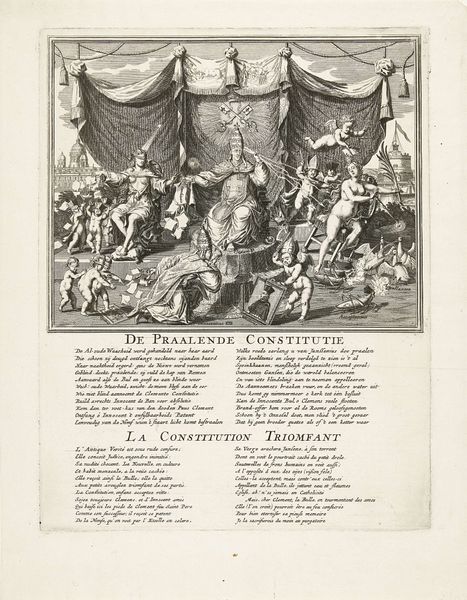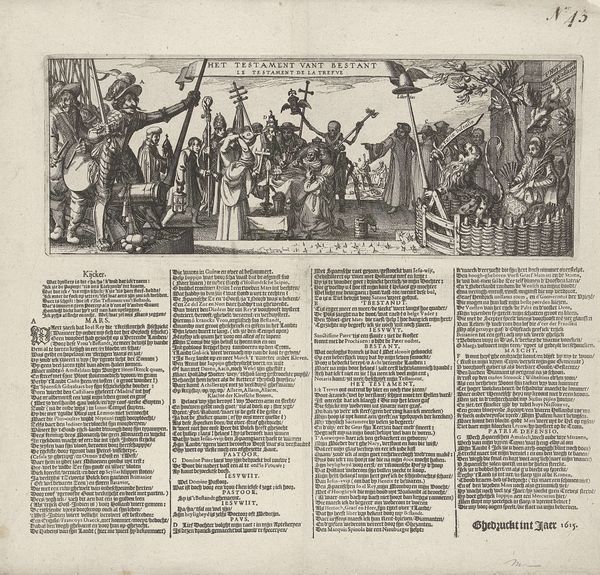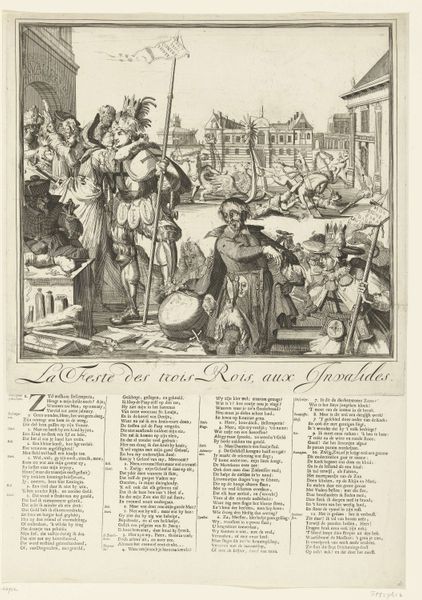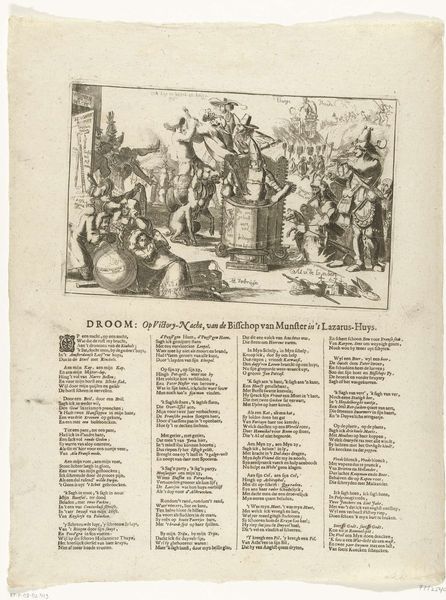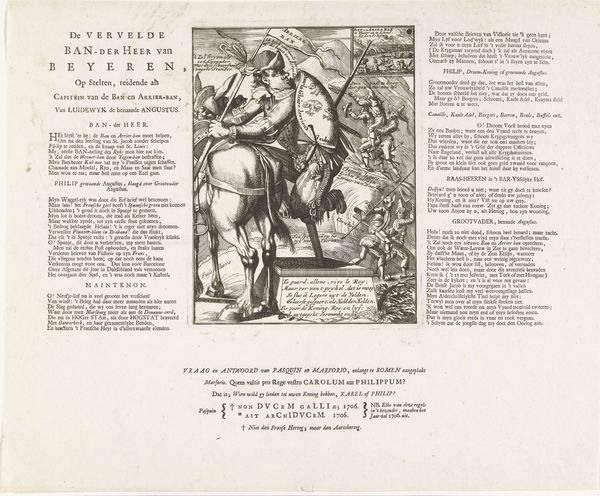
print, paper, engraving
#
allegory
#
baroque
# print
#
paper
#
history-painting
#
engraving
Dimensions: height 443 mm, width 322 mm, height 204 mm, width 268 mm
Copyright: Rijks Museum: Open Domain
Editor: This print, "Allegory on the political situation in the year 1672," by Romeyn de Hooghe, strikes me as quite dramatic. There's so much happening, with all these figures crowded together. The light and dark contrast really add to a sense of turmoil. How do you interpret this work? Curator: It's fascinating, isn’t it? De Hooghe's print, an engraving, encapsulates the "Rampjaar," the disastrous year of 1672 for the Dutch Republic. See the lion? A traditional symbol of Dutch courage, but here, it's weakened, attacked. What might that suggest to you about the cultural mood? Editor: I guess that means the Dutch Republic wasn't doing so well? It looks like everyone's ganging up on it. Curator: Precisely! Consider the figure being painted into the portrait. Symbols can operate on many levels, so, who could they represent, given the historical context? Think of England and France. Editor: Ah, the foreign powers! They're literally painting the Dutch into a corner. And the angel above must represent divine judgement, then? Curator: Yes, religious elements added another layer of meaning. Think of it: divine judgement suggests both punishment for sins and potential for redemption. How are visual symbols deployed here as warnings or instruments? Editor: It's incredible how much information is packed into this single image. I had no idea there was so much symbolic meaning. Curator: And it serves as a powerful cultural record, illustrating the psychological and political climate of a very specific and turbulent time. I'm glad we looked closely today.
Comments
No comments
Be the first to comment and join the conversation on the ultimate creative platform.


